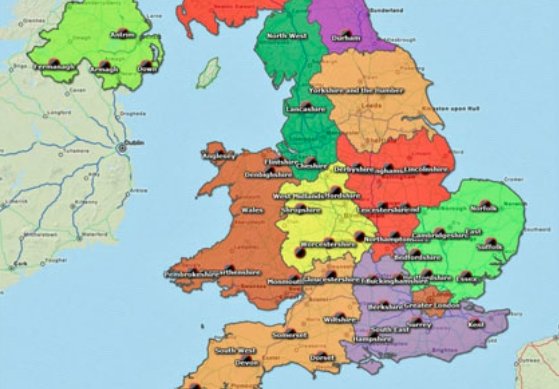LONDON – Britain’s local government system is sprawling, layered, and often opaque. As voters across England, Scotland, and Wales prepare for the 2025 local elections, the patchwork of councils that serve them is under growing scrutiny — and possible reform.
The UK government’s December 2024 white paper on English devolution and local governance set out plans for sweeping structural changes. But for now, the rules of engagement vary sharply depending on geography, with Scotland and Wales operating under simpler unitary models, while England remains divided by single-tier, two-tier, and overlapping authorities.
A three-nation system
Despite similarities in overall responsibilities — waste, housing, social care, education — how these services are delivered differs widely across the three nations:
-
England has both single-tier and two-tier systems, plus a third layer of town and parish councils.
-
Scotland and Wales operate fully unitary models — one council per area handling all local services.
-
All three nations retain smaller community or parish councils that address very localised concerns.

England: complex and in flux
England’s local governance is uniquely fragmented. There are two types of council structures here:
Single-tier authorities
These deliver all local government services directly:
-
Unitary authorities (62 as of March 2025) now handle full-service delivery in their areas. Once two-tier structures, these have since merged into a single governing body.
-
Metropolitan boroughs (36 in total) serve large cities and surrounding areas. Created in 1974, they operate like unitary councils but weren’t previously split.
-
London boroughs (32, plus the sui generis City of London) manage local services in the capital, sharing strategic responsibilities — like transport and policing — with the Greater London Authority and Mayor of London.
Two-tier authorities
Still common in rural and semi-rural England, this structure divides responsibilities:
| Tier | Count | Key Functions |
|---|---|---|
| County councils | 21 | Education, highways, social care, children’s services |
| District councils | 164 | Waste collection, planning, council tax, housing |
In these areas, local services are split between county-level and district-level administrations — a model long criticised for inefficiency and duplication.
Reform on the horizon
Labour’s Devolution White Paper (2024) proposes phasing out the two-tier model entirely. All councils in two-tier areas were invited to submit their own unitary restructuring proposals by November 2025, with new models expected to go live from 2027–28.
Scotland and Wales: one council to rule them all
Both Scotland and Wales use unitary systems exclusively.
-
Scotland has 32 unitary councils, all delivering the full suite of services within their geographic areas. Councils include both city-based authorities (e.g. Glasgow City Council) and those spanning rural counties.
-
Wales is served by 22 unitary authorities, known variously as county or borough councils.
This streamlined approach means less overlap and clearer lines of accountability — something English reform advocates argue should be mirrored south of the border.
The ‘third tier’: hyper-local democracy
Across all three nations, a third level of governance operates in small towns, villages, and urban neighbourhoods:
-
Known as town or parish councils in England, and community councils in Scotland and Wales, these bodies handle hyper-local services:
-
Parks and community halls
-
Local events
-
Litter and public benches
-
Allotments
-
Although limited in power and budget, these councils often form the frontline of civic engagement, providing residents with a tangible link to their local democracy.
Who runs the council?
Councils are usually governed by elected councillors, chosen in staggered local elections. Some councils are led by leaders, chosen by elected members, while others have directly elected mayors — not to be confused with metro mayors, who oversee combined authority areas across multiple councils.
The Mayor of London is a separate case altogether, combining executive power over transport, housing, and policing with ceremonial responsibilities.
What’s next?
The current government’s plans suggest big changes ahead, at least in England. A shift toward single-tier authorities could simplify the landscape — but it will also mean negotiating mergers, rebalancing budgets, and reshaping local representation.
With the November 2025 deadline for unitary proposals fast approaching, this year’s local elections may be the last under the current two-tier configuration in many parts of the country.


















